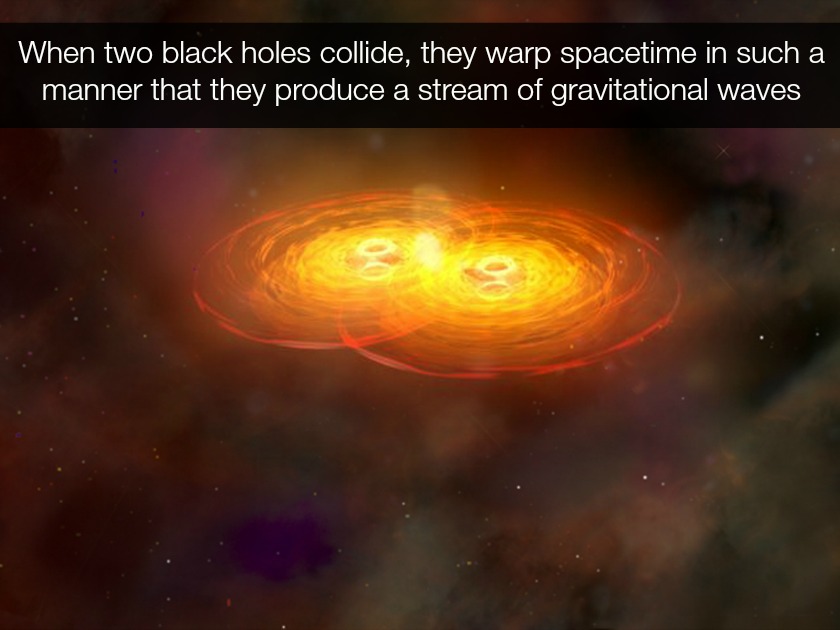

Black holes can be seen by many as residing in two camps – you view them as the ultimate force of destruction; a form of Universal whirlpool from which nothing can escape (and often you find yourself musing over micro-black holes being created by the Large Hadron Collider, as a side-effect of this belief!). Or the other camp viewing them as the bringers of life due to their immense gravitational properties keeping galaxies together, allowing gas clouds to be retained to ultimately form systems like our own.
Whatever camp you truly reside within actually bears no relevance on the natural function of these natural phenomena. Taking super-massive black holes as the topic here; science has made educated estimations that they reside at the centre of every galaxy. Let us not forget that these galaxies are part of clusters, all of which are moving at extreme velocity in the Universe. Physicists have additionally estimated that many galaxies collide and merge with other galaxies – whether through velocity variations, or simple gravitational attraction, we do not know for sure.
Despite the thought of a galactic collision being everyone’s idea of a ‘bad day’, we must remember two things:
- Firstly, in human terms, a galactic collision/merger is undertaken over huge timescales. It has been estimated that Andromeda will commence merging with our own galaxy, the Milky Way, in 4 billion years time. Yet the merger will be believed to complete in 6 billion years time. That is a duration of 2 billion years for the galactic centre to become stable (i.e. fully merged black holes).
- Secondly, the Milky Way, and our System are massively spaced out – Andromeda much the same. The chances and likelihood of collisions are extremely rare based on the huge mind-boggling distances involved.

So, now that I may have extinguished minor anxieties for the forthcoming merger (which isn’t a concern we should have, unless you’ve discovered eternal youth!), let us consider the super-massive black holes at the centre.
I’ve found a nifty video created for NASA which simulates the death-spiral merger of 2 super-massive black holes, along with a video of the gravitational effects of such mergers. You can view this videos here (warning: the videos are large, so be patient with your internet).
As can be seen in the simulations, both super-massive black holes orbit each other in a decaying orbit – when they eventually combine, a huge amount of energy is released in a jet. At which point Einstein’s theory of general relativity predicts a large release of gravitational waves emanating from the new single super-massive black hole.
The Aftermath:
This remaining universal construct will have the sum of both constituent parts and will have the combined accumulation disk and gravity of both black holes. Due to the gravity involved, it is entirely plausible that many galactic bodies may be displaced from the galaxy in a slight-shot effect much like was discussed in my earlier article.
So, in summary, the black holes coalesce into one even larger black hole, but the effects of the gravity waves and jets can only be theorised about. There is still so much we need to find out about black holes and their roles in the universe… we can only hope that we get the opportunity to learn more in our lifetimes!